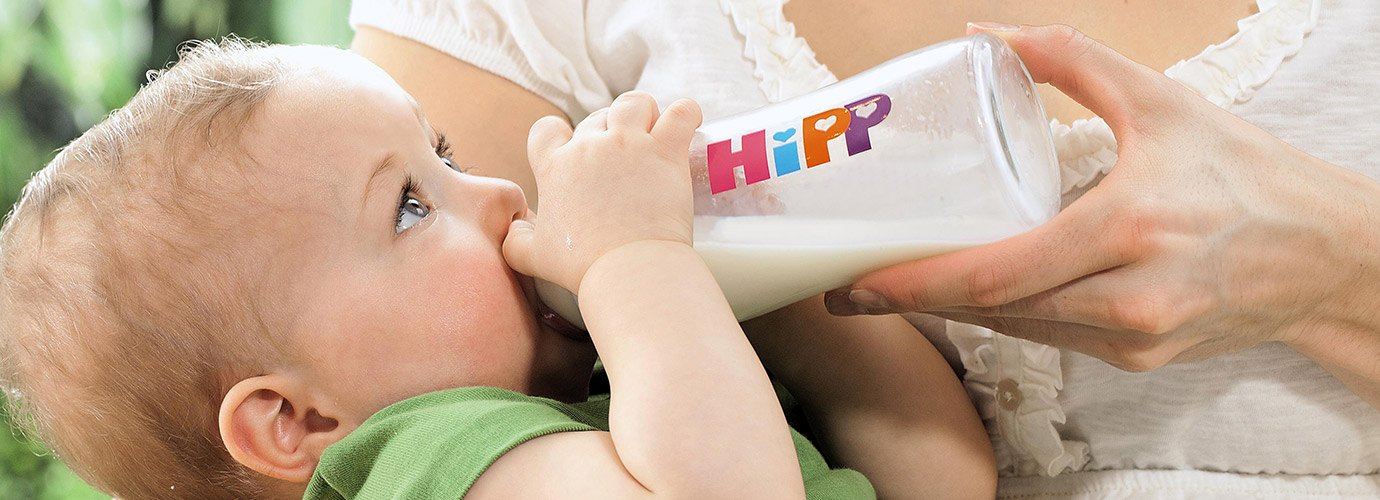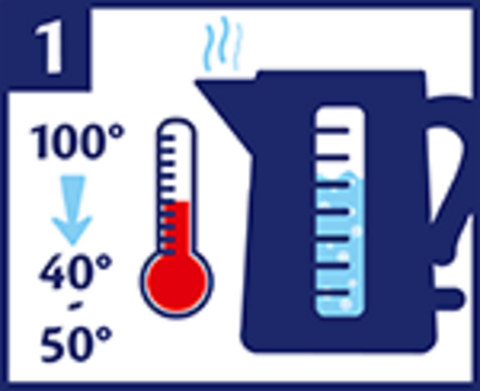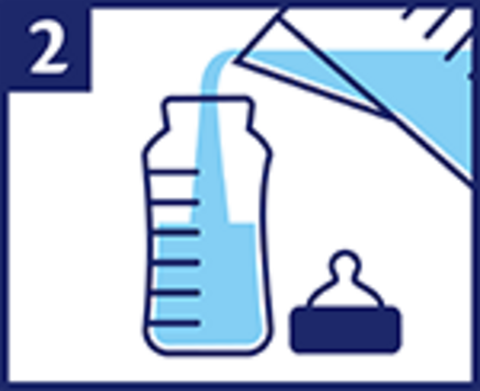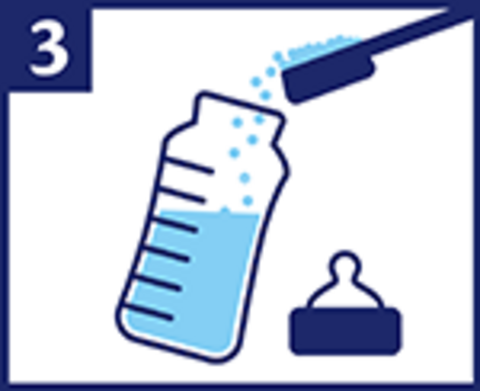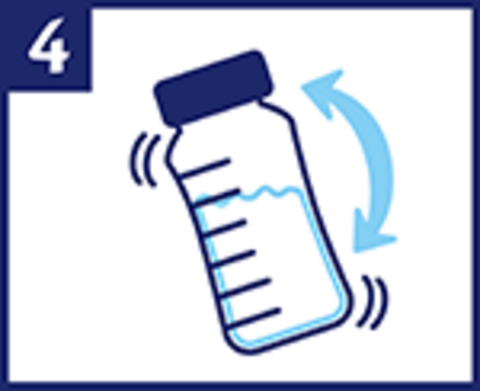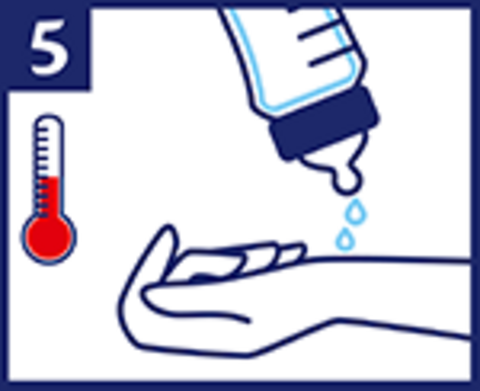Prepare infant formula safely
Powdered infant formulae are low-germ, but not sterile. That means that they might contain a very marginal amount of unfavourable germs. To prevent these germs from proliferating in the ready-to-drink formula, it is important to ensure the safe preparation and safe handling of the formula.
Basic rules of hygiene
- Clean the work surface thoroughly and use soap and warm, running water to wash your hands thoroughly.
- Do not prepare infant formula and raw foodstuffs next to one another at the same time.
- Prepare formula from scratch for each meal and feed it immediately.
- Discard any leftovers and do not use them for the next meal. Do not store already prepared formula in the refrigerator.
- Keeping already prepared formulae warm by using a bottle warmer or a thermos flask must be avoided at all costs.
- Clean bottle, teat and ring thoroughly immediately after the feeding.
- It is advisable to boil out rubber teats/latex teats from time to time (not necessary for silicone teats).
(Reference 1-6)
- Always follow the instructions on the packaging.
- Keep strictly to the stated amount of powder and water according to the dosage table. This is important for the composition of nutrients and the digestibility of the Formula.
- Only use the measuring spoon enclosed in the packaging.
- Do not warm up the formula in the microwave oven (danger of scalding).
Tip when you are out and about
Take boiled water in a clean and closed thermos flask and already portioned milk powder with in a clean and dry feeding bottle.
- If required, prepare the formula freshly and feed it immediately.
Alternatively: offer ready-to-drink infant formulae that can also be offered cold (at room
temperature).
References:
1 Koletzko B et al., Monatsschr Kinderheilkd 2016; 164:433-457.
2 Schnakenburg K et al., Monatsschr Kinderheilkd 2005; 153:495-500.
3 Bührer C et al., Monatsschr Kinderheilkd 2014; 162:527-538.
4 EFSA, EFSA Journal 2004; 113:1-35.
5 BfR, Stellungnahme Nr. 040/2012.
6 Agostoni C et al., JPGN 2004, 39:320-322.


